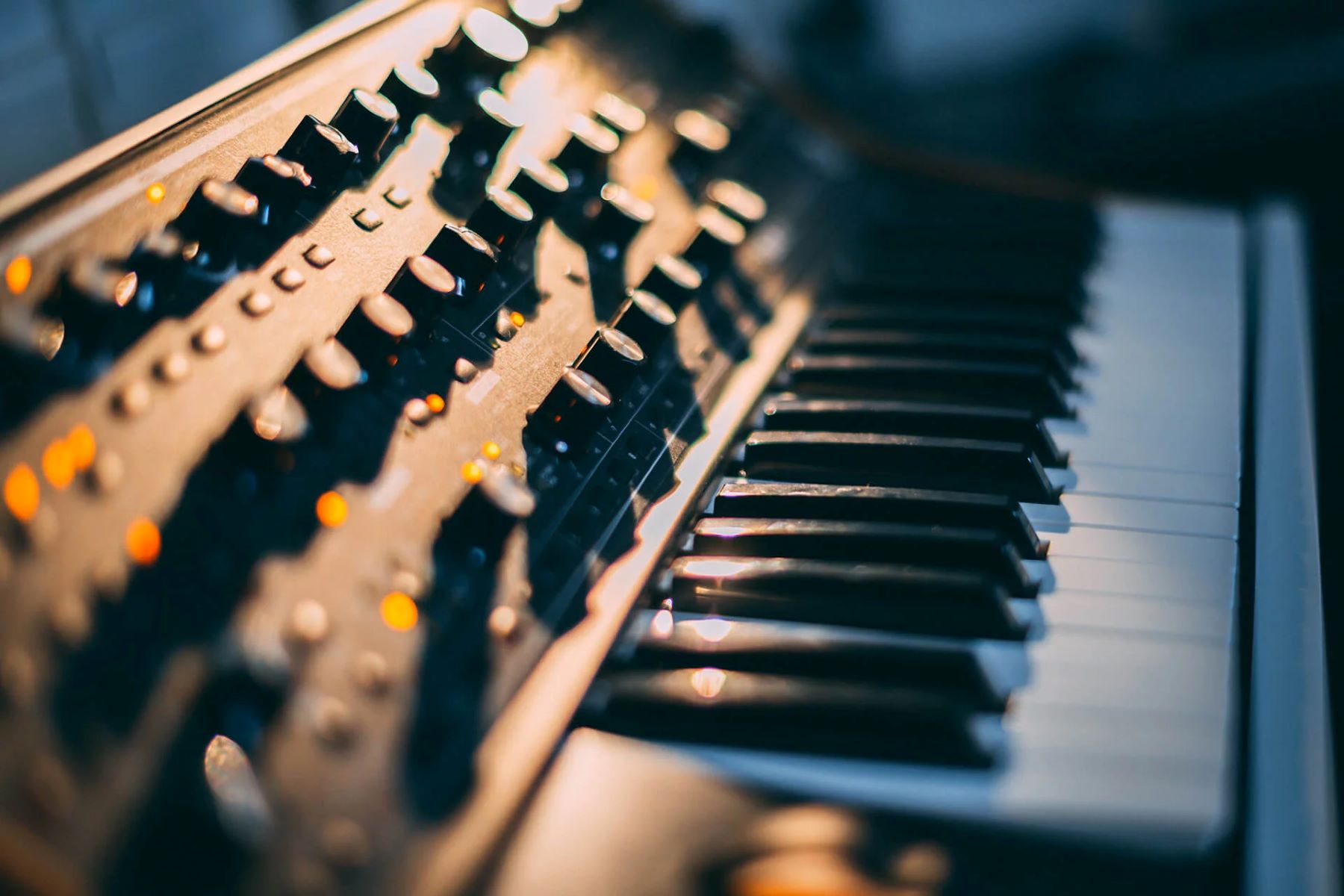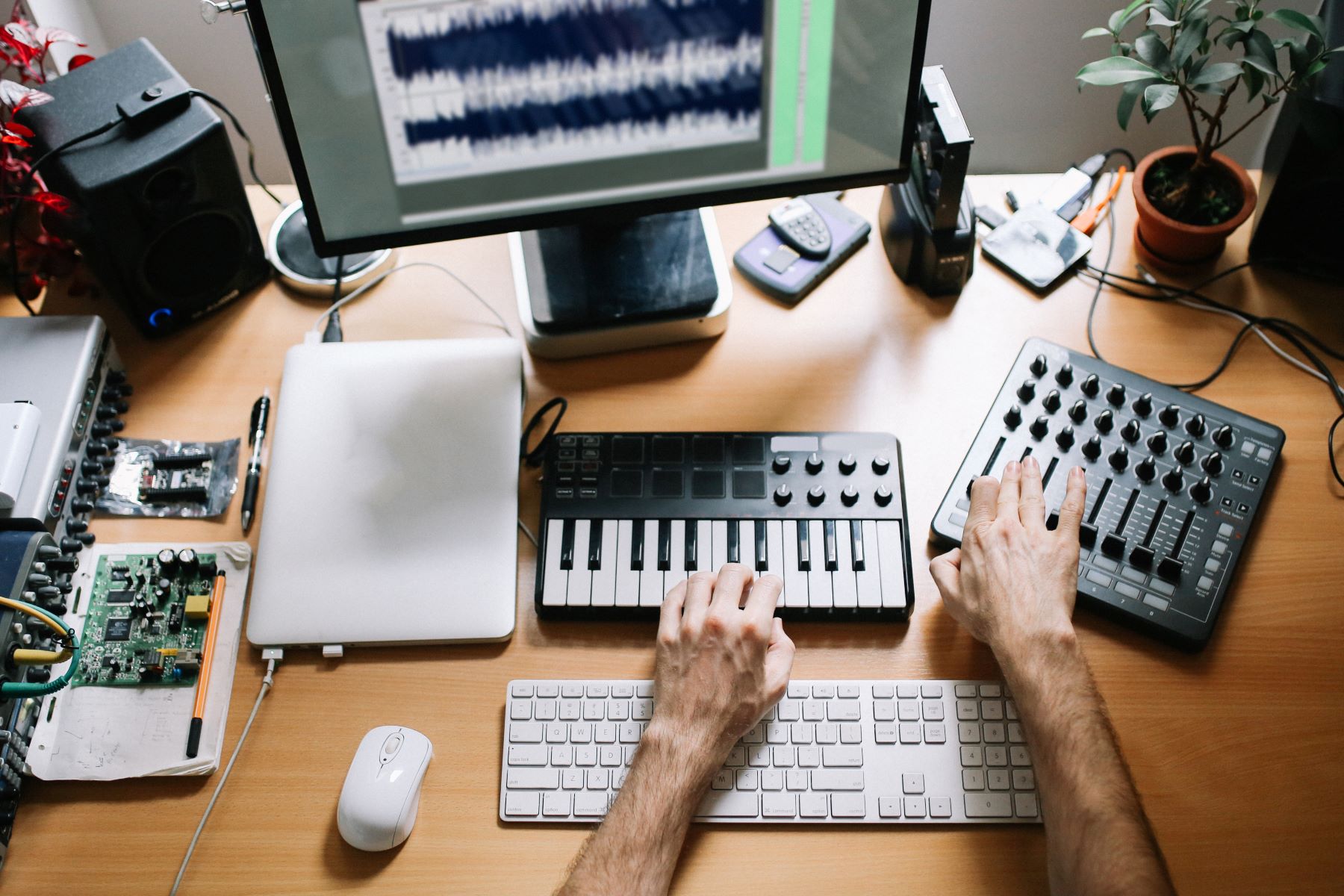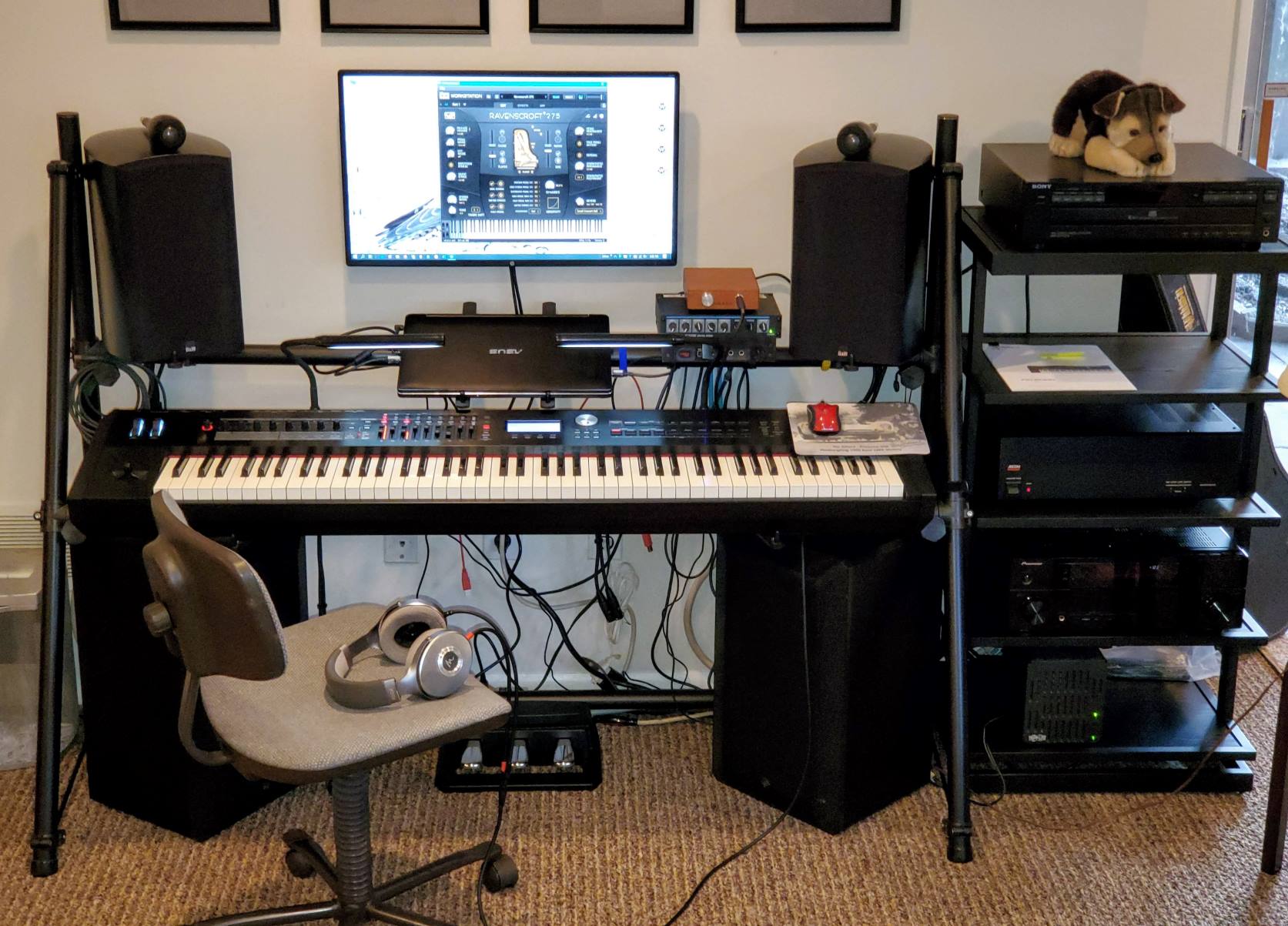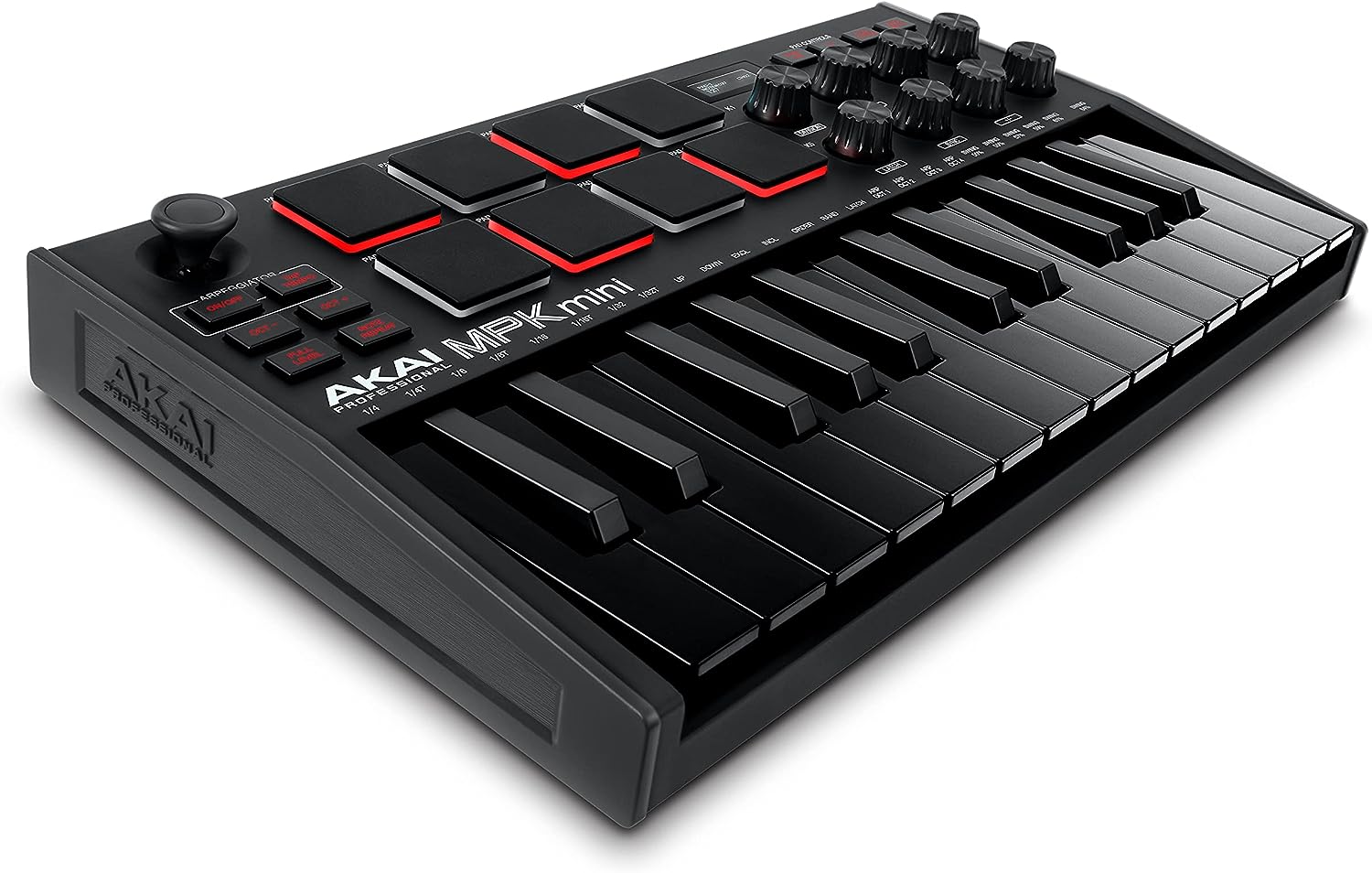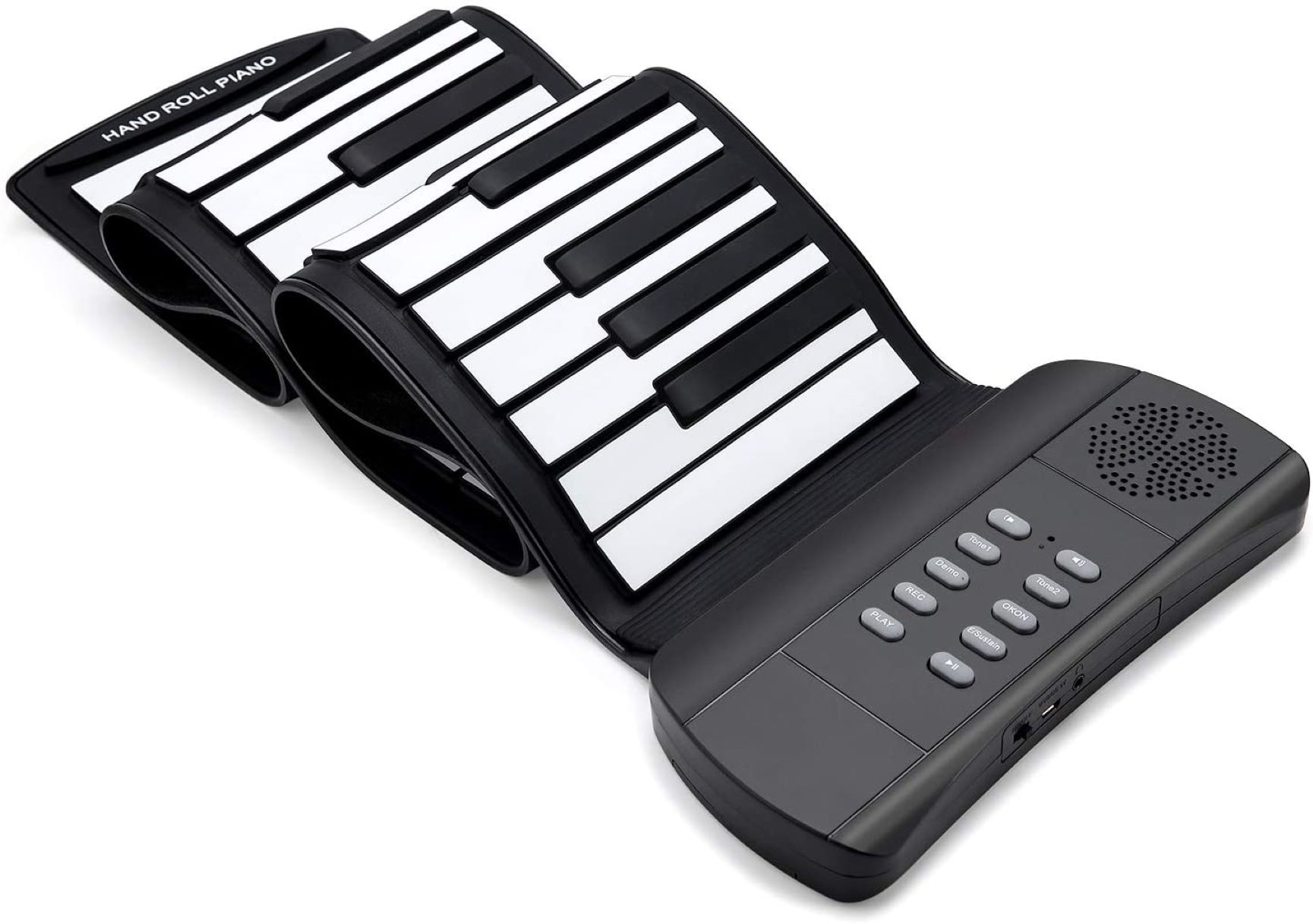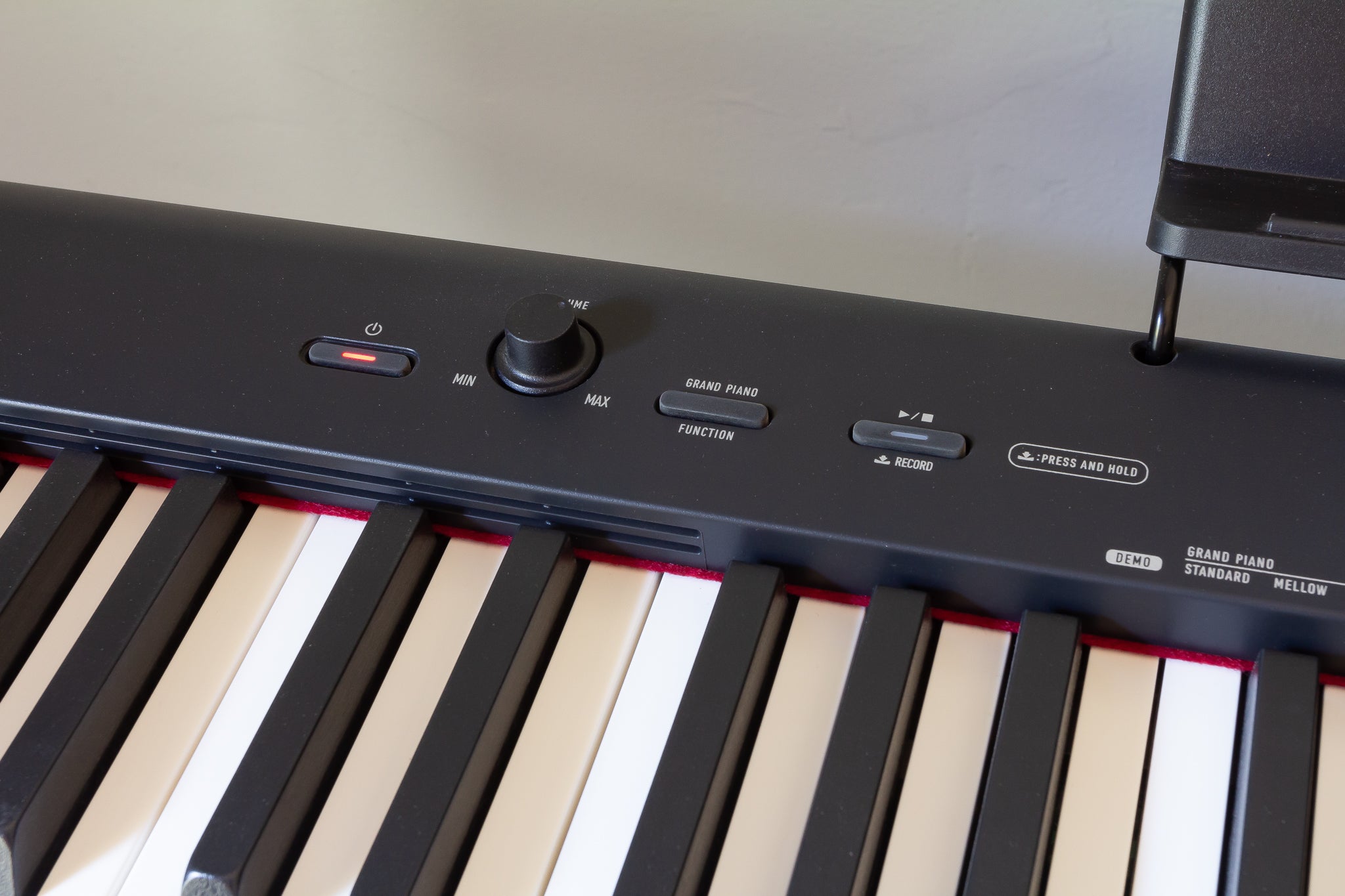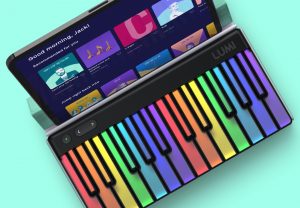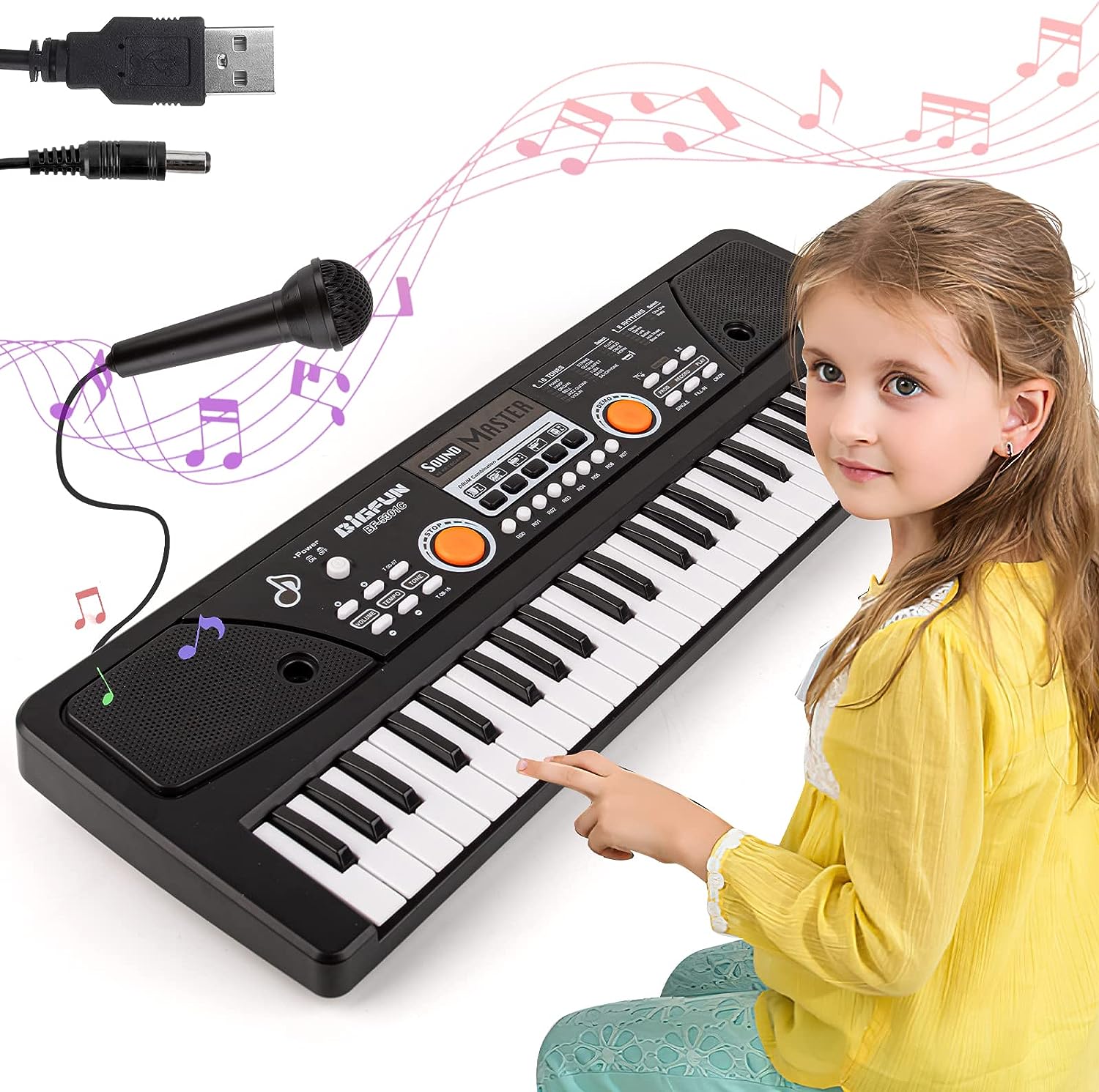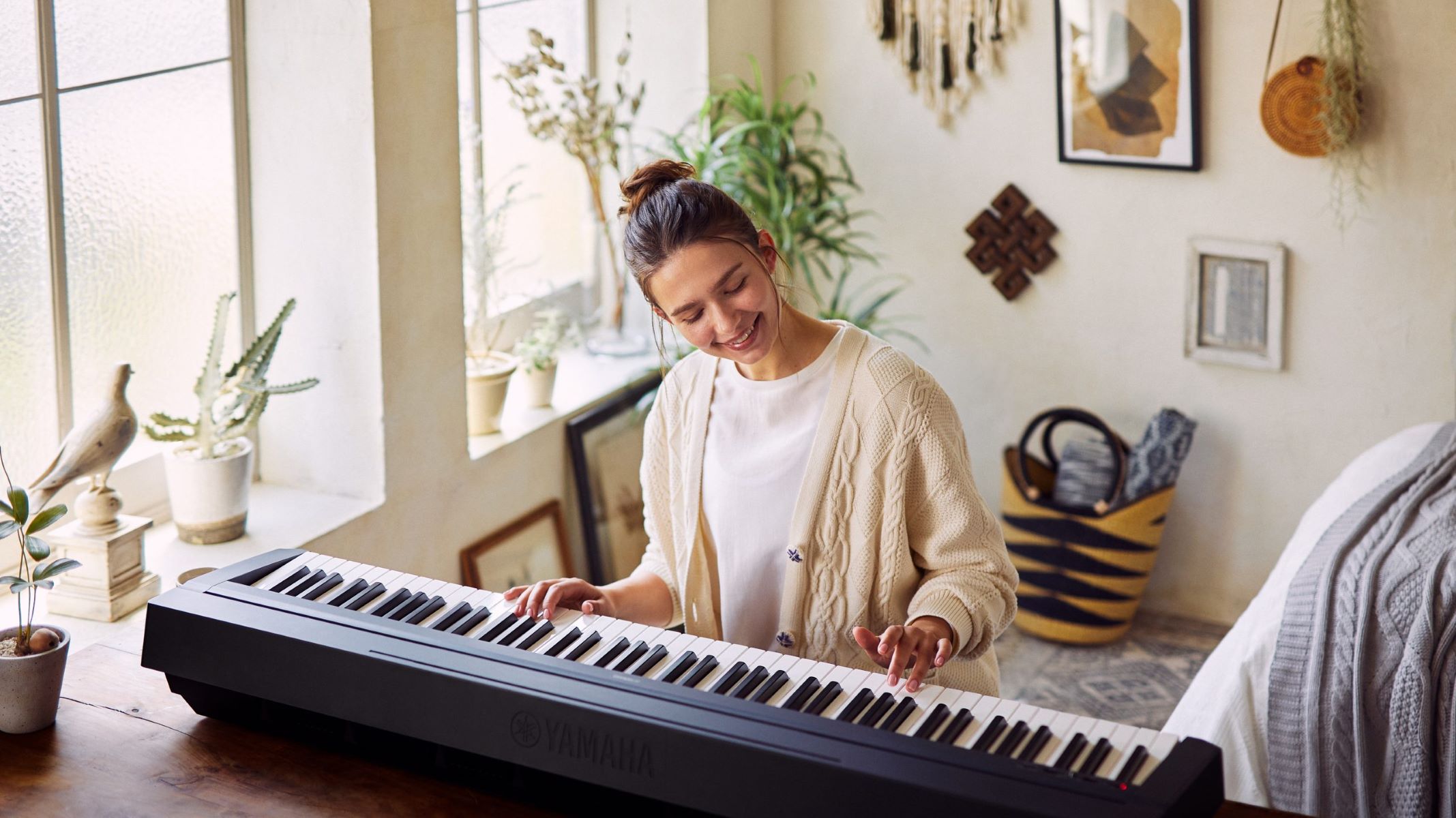Introduction
Welcome to the world of digital pianos, where the classic elegance of a traditional instrument meets the cutting-edge technology of the digital age. Playing pre-recorded music on a digital piano can add a whole new dimension to your musical experience. Whether you're a beginner or an experienced pianist, incorporating pre-recorded music into your repertoire can elevate your performances and expand your creative horizons.
Digital pianos are versatile instruments that offer a wide range of features, including the ability to play pre-recorded music. By harnessing the power of technology, you can seamlessly integrate your favorite songs into your piano playing, creating a captivating fusion of live performance and recorded music.
In this guide, we'll explore the process of playing pre-recorded music on a digital piano, from understanding the instrument's capabilities to connecting external devices and delivering a seamless performance. Whether you're eager to impress your audience with a dynamic musical performance or simply want to enjoy the experience of playing along with your favorite songs, this guide will equip you with the knowledge and skills to make the most of your digital piano's audio capabilities.
So, let's embark on this musical journey and unlock the potential of your digital piano as we delve into the intricacies of playing pre-recorded music with finesse and flair.
Understanding the Digital Piano
Before delving into the intricacies of playing pre-recorded music on a digital piano, it’s essential to grasp the fundamental features and functionalities of this modern musical instrument. Unlike traditional acoustic pianos, digital pianos leverage advanced technology to replicate the sound and feel of a traditional piano while offering a myriad of additional capabilities.
One of the key distinctions of a digital piano is its ability to produce a wide range of sounds beyond the traditional piano tones. These instruments often feature an extensive library of instrument voices, including strings, organs, and synthesizers, allowing musicians to explore diverse musical genres and experiment with different sonic textures.
Furthermore, digital pianos are equipped with built-in speakers or audio outputs, enabling the instrument to produce sound without the need for external amplification. This feature is particularly advantageous when playing pre-recorded music, as it ensures that the audio output is clear and well-defined, enriching the overall listening experience.
Another pivotal aspect of digital pianos is their integration with digital technology. Many modern digital pianos are equipped with USB and MIDI connectivity, enabling seamless communication with external devices such as computers, tablets, and smartphones. This connectivity opens up a world of possibilities for accessing and playing pre-recorded music, whether it’s stored on a digital device or accessed via online streaming platforms.
Moreover, digital pianos often incorporate advanced features such as recording and playback functionalities, allowing musicians to capture their performances and play them back at their convenience. This capability not only facilitates practice and self-assessment but also extends to the incorporation of pre-recorded music into live performances, offering a dynamic and versatile musical experience.
By understanding the multifaceted nature of digital pianos and their integration with modern technology, musicians can harness the instrument’s diverse capabilities to seamlessly incorporate pre-recorded music into their repertoire, expanding their creative horizons and enhancing their musical expressions.
Choosing the Right Audio Input
When preparing to play pre-recorded music on your digital piano, selecting the appropriate audio input is crucial to ensure optimal sound quality and seamless integration with the instrument. Digital pianos offer various audio input options, each with its unique advantages and considerations.
One common audio input for digital pianos is the traditional 3.5mm auxiliary input, which allows you to connect external audio devices such as smartphones, MP3 players, or tablets directly to the piano. This direct connection provides a straightforward and convenient method for playing pre-recorded music, enabling you to access your favorite songs with ease and simplicity.
Alternatively, some digital pianos feature USB audio input, allowing you to connect compatible devices directly to the instrument. This method offers the advantage of digital audio transmission, which can result in improved sound quality and reduced interference, enhancing the overall listening experience when playing pre-recorded music.
For musicians seeking a more expansive audio input option, digital pianos equipped with Bluetooth connectivity provide a wireless solution for playing pre-recorded music. By pairing your smartphone, tablet, or other Bluetooth-enabled devices with the piano, you can effortlessly stream music wirelessly, eliminating the need for physical cable connections and offering enhanced flexibility in accessing and playing a diverse range of pre-recorded music.
It’s essential to consider the specific audio input options available on your digital piano and choose the method that best aligns with your preferences and the devices you intend to use. Whether you prioritize convenience, audio quality, or wireless functionality, selecting the right audio input ensures a seamless and enjoyable experience when incorporating pre-recorded music into your piano playing.
Connecting Your Digital Piano to an External Device
Connecting your digital piano to an external device is a pivotal step in preparing to play pre-recorded music, as it establishes the link between the instrument and your chosen audio source. Depending on the audio input options available on your digital piano, there are several methods for establishing this connection, each offering unique benefits and considerations.
If your digital piano features a 3.5mm auxiliary input, the process of connecting an external device is straightforward. Simply use a compatible audio cable to establish a direct physical connection between the device and the piano. This method provides a reliable and direct link, ensuring minimal signal loss and interference, and is ideal for musicians who prioritize stable and consistent audio transmission when playing pre-recorded music.
For digital pianos equipped with USB audio input, connecting an external device involves using a USB cable to establish a digital audio connection. This method offers the advantage of digital signal transmission, which can result in improved audio fidelity and reduced signal degradation, enhancing the overall sound quality when playing pre-recorded music on the piano.
Alternatively, if your digital piano supports Bluetooth connectivity, establishing a wireless connection with an external device involves pairing the piano with a compatible Bluetooth-enabled device, such as a smartphone or tablet. This wireless method eliminates the need for physical cables, offering enhanced flexibility and convenience when accessing and playing pre-recorded music, and is particularly well-suited for musicians who prioritize seamless wireless integration.
Regardless of the method chosen, ensuring a secure and stable connection between your digital piano and the external audio device is essential for a seamless and enjoyable experience when incorporating pre-recorded music into your piano playing. By understanding and leveraging the audio input capabilities of your digital piano, you can establish a reliable connection that enhances the overall sound quality and versatility of your musical performances.
Playing Pre-Recorded Music on Your Digital Piano
Once you have established the audio connection between your digital piano and an external device, you are ready to embark on the exciting journey of playing pre-recorded music. Whether you are performing for an audience or indulging in a solo musical session, the process of integrating pre-recorded music into your piano playing offers a myriad of creative possibilities and enriches the overall musical experience.
To begin, select the pre-recorded music you wish to play and ensure that the audio playback device is ready to transmit the sound to your digital piano. Once the connection is established and the audio source is prepared, adjust the volume and settings on both the piano and the external device to achieve a balanced and harmonious sound output.
With the audio connection in place, you can now synchronize your piano playing with the pre-recorded music. Whether you are accompanying a vocal performance, improvising instrumental melodies, or simply enjoying the experience of playing along with your favorite songs, the seamless integration of live piano playing and pre-recorded music creates a captivating fusion of musical elements.
As you immerse yourself in the musical synergy between your piano and the pre-recorded music, consider experimenting with different playing styles, dynamics, and expressions to complement the audio playback. Whether you aim to evoke emotive melodies, rhythmic accompaniments, or intricate harmonies, the combination of live piano performance and pre-recorded music offers a canvas for artistic exploration and creative expression.
Moreover, the ability to seamlessly transition between playing live and integrating pre-recorded music enhances the versatility of your musical performances, allowing you to curate dynamic and engaging sets that captivate and delight your audience. Whether you are a solo performer, a collaborative musician, or an aspiring composer, the fusion of live piano playing and pre-recorded music opens up a world of creative opportunities.
By embracing the process of playing pre-recorded music on your digital piano, you can elevate your musical expressions, expand your repertoire, and infuse your performances with a captivating blend of tradition and innovation. Whether you’re exploring classical masterpieces, contemporary hits, or your original compositions, the seamless integration of pre-recorded music amplifies the artistic depth and sonic richness of your piano playing, creating a truly immersive and memorable musical experience.
Tips for a Seamless Performance
As you embark on the journey of playing pre-recorded music on your digital piano, incorporating the following tips can enhance the quality and impact of your performances, ensuring a seamless and captivating musical experience for both you and your audience.
- Audio Balance: Prior to your performance, carefully adjust the audio levels of both your digital piano and the external audio device to achieve a harmonious balance between live piano playing and pre-recorded music. Striking the right audio balance is essential for a cohesive and immersive musical presentation.
- Expression and Dynamics: Infuse your piano playing with expressive dynamics and nuanced phrasing to complement the pre-recorded music. Consider varying your touch, articulation, and pedal usage to convey emotional depth and musical sensitivity, creating a seamless fusion of live and recorded elements.
- Practice and Rehearsal: Dedicate time to rehearse and refine your performances, ensuring that the integration of pre-recorded music aligns seamlessly with your live piano playing. Practice transitioning between different musical sections and adapt your playing to complement the nuances of the pre-recorded tracks.
- Technical Familiarity: Familiarize yourself with the technical aspects of your digital piano, including its audio input options, connectivity features, and playback controls. Understanding the capabilities of your instrument empowers you to optimize the integration of pre-recorded music and tailor your performances to suit your artistic vision.
- Artistic Interpretation: Embrace the opportunity to interpret and personalize the pre-recorded music through your piano playing. Infuse your performances with artistic interpretation, adding unique embellishments and improvisational elements to create a cohesive and compelling musical narrative.
- Engage Your Audience: Whether performing for a live audience or recording your musical endeavors, strive to engage and captivate your listeners through the seamless integration of live piano playing and pre-recorded music. Consider the emotional impact and narrative flow of your performances to create a memorable and immersive musical experience.
By incorporating these tips into your musical practice and performance endeavors, you can elevate the seamless integration of pre-recorded music on your digital piano, unlocking a world of creative possibilities and enriching the depth and impact of your musical expressions.







